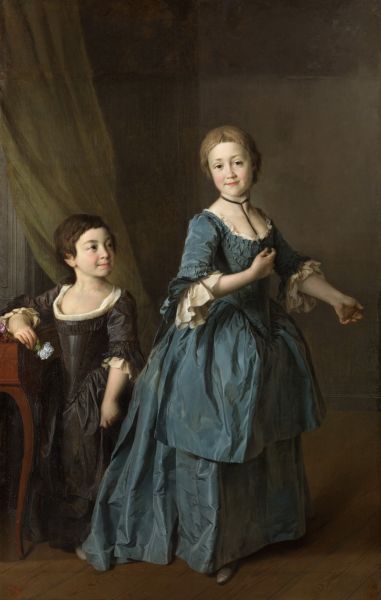|
|
Portrait of Fedosia Rzhevskaya and Nastasia Davydova. 1772

Levitsky Dmitry,
Oil on canvas
161 х 103
State Russian Museum
Annotation
In the seventies of the 18th century Catherine II commissioned Levitsky to paint a series of "Smolyanki" that consisted of seven portraits of the pupils of the Smolny Institute for Noble Maidens – privileged educational establishment, opened in St. Petersburg in 1764 by decree of the Empress. Daughters of the nobles were preparing there for the Royal Court service and secular life. Talents that were "pleasant in society" were developed in girls. They were taught French and German languages, the elegant manners, as well as singing, dancing, playing musical instruments. The performances were often held in the Smolny Institute. Smolyanki acted out French comedies and also performed in ballet.
Rzhevskaya Feodosiya Stepanovna (1760–1795) – the daughter of Lieutenant-General S.M. Rzhevsky and Sofia Nikolaevna (nee. Baroness Stroganova). She graduated from the Smolny Institute with the insignia (cipher) of Catherine II designed as a brooch in the shape of the Empress initial. She got married to Prince Mikhail Golitsyn, the state councilor. Later he was the governor of Yaroslavl.
Nastasia Davydova Mihaylovna (1764? –?). Princess came from the Georgian princely clan. In 1780 her father, Major-General M. M. Davydov was the governor of Tambov. Perhaps, it was Nastasia Davydova Mihaylovna, with whom there are associated some mention of the Princess Davydova, who participated in 1780 performances of Tambov amateur theater.
Author's Biography
Levitsky Dmitry
Levitsky, Dmitry Grigoryevich
1735, Kiev - 1822, St Petersburg
Leading Russian eighteenth-century painter and portraitist. Son of Grigory Levitsky Nos, a priest and Ukrainian engraver. Moved to St Petersburg (c. 1758). Studied under Alexei Antropov. Worked in Moscow (17605). Nominated to the Academy (c. 1769). Academician (1770). Headed the portraiture class at the Imperial Academy of Arts (1771-87). Councillor (1776), member of the Academy council (1780). Retired for unknown reasons (1787). Worked as a free painter. Returned to the Academy council (1807).

